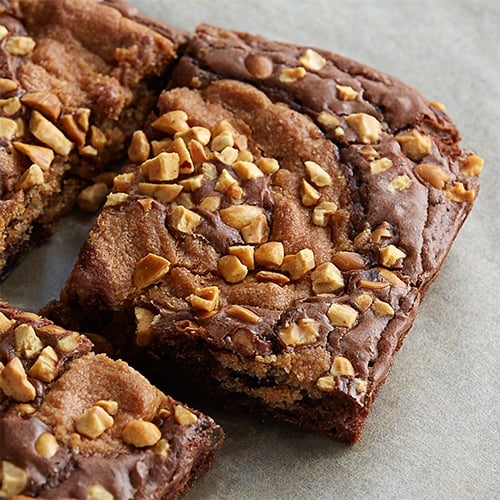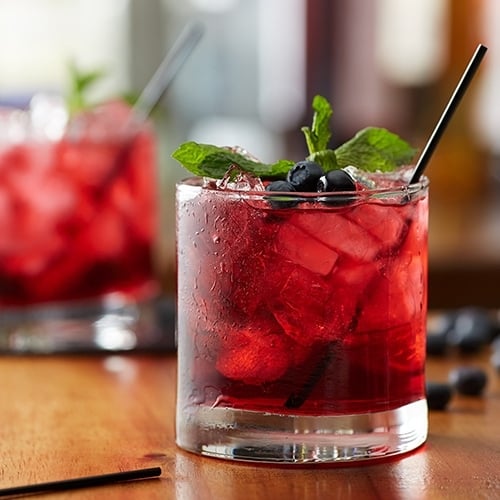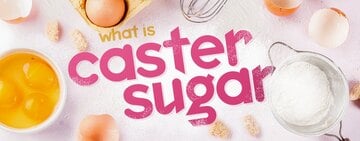What Is Invert Sugar?
Given the various sugar and sweetener options on the market, you might be curious why invert sugar is loved by foodservice experts such as bakers, bartenders, chefs, and confectioners. A higher viscosity, bolder sweetness, and moisture-retaining qualities are just a few benefits that set invert sugar on its pedestal. Keep reading to discover the process of making invert sugar, how to incorporate it into your recipes, and answer common questions about this sweetening option.
Invert Sugar Definition

Invert sugar is table sugar (also known as sucrose) broken into the molecular bonds of glucose and fructose. The result is a thick-as-honey, clear liquid that boasts all the benefits of conventional sweeteners with additional features. Also known as inverted sugar, invert sugar syrup, and trimoline, this concoction is the preferred form of sugar by many bakers, confectioners, and sauce makers.
What Are the Benefits of Invert Sugar?
Invert sugar is just as useful as other sugars and sweeteners with a few additional benefits.
- Inverted sugar is sweeter than other sugar substitutes, so you can use less to achieve the same result.
- It retains moisture, yielding chewier and softer cookies and brownies.
- It keeps your desserts and sweet breads from drying out, lengthening their shelf life. If you're shipping your baked goods, prepare them with invert sugar.
- It slows down or prevents crystallization and is perfect for smooth-as-silk frozen desserts and types of frosting like icing, fondant, and ganache.
What Is Invert Sugar Used For?

Invert sugar can be used for desserts, candies, and beverages as a substitute for standard sugar, high fructose sugar, and simple syrup.
Invert Sugar in Desserts
Invert sugar makes desserts softer and chewier by retaining moisture easier than other sugars. This quality also keeps the desserts from drying out and lengthens their shelf life. Consider using invert sugar in the following desserts:
- Cookies
- Brownies
- Ice cream
- Sorbet
- Sweet breads
- Icing
- Fondant
- Ganache
Invert Sugar in Candies
Invert sugar is used as the sweetener in candies because it can slow down and often fully resist crystallization. Invert sugar also maintains a long shelf life for candies and truffle fillings. Confectioners should consider using invert sugar in the following items, especially if they plan to package their chocolate for shipment:
- Fudge
- Toffee
- Marshmallows
- Caramels
- Taffy
Invert Sugar in Beverages

Beverages benefit from the use of invert sugar because it fully dissolves in both hot and cold drinks. Invert sugar is also noticeably sweeter than other sweeteners, making it a more economical option because less sugar is needed to achieve the desired taste. From coffee drinks and cocktails to beer and wine, invert sugar is an excellent choice for the following beverages:
Invert Sugar vs High Fructose Corn Syrup
The difference between high fructose corn syrup and invert sugar is their glucose-to-fructose ratio. While invert sugar has a 1:1 ratio, high fructose corn syrup goes through enzymatic processing, resulting in higher fructose percentages and lower glucose percentages. Otherwise, the end products’ viscosity (a fluid's thickness) and taste are similar.
Invert Sugar vs Simple Syrup
Simple syrup is a 1:1 ratio of sugar and water, where the sugar has been fully dissolved into the water, creating a low viscosity and subtly sweet syrup. Inverted sugar is a 2:1 ratio of sugar and water, along with the addition of citric acid. It’s cooked in a temperature-controlled environment to manipulate the sugar molecules to split, resulting in higher viscosity and substantially sweeter syrup than simple syrup.
Invert Sugar vs Sugar
The difference between sugar and invert sugar is their monosaccharide bonding. Granulated sugar is also known as sucrose, a disaccharide composed of two monosaccharides bonded together: glucose and fructose. Because the monosaccharides in granulated sugar are bonded, granulated sugar is in a solid state.
Inverted sugar is also sucrose. However, the glucose and fructose in inverted sugar are split in the cooking process with citric acid and water, resulting in a liquid state.
Back to TopHow To Make Invert Sugar
Invert sugar is simple to make, requiring only a few affordable ingredients and basic skills. It also stays fresh for months, but since it's such a versatile ingredient, you probably won't have to worry about using all of it before it goes bad.

Invert Sugar Ingredients
Check that you have all these kitchen tools and invert sugar ingredients before you start the recipe.
Tools
- Heavy-bottomed pot
- Rubber spatula
- Pastry brush
- Small bowl of water
- Candy thermometer
- Glass jar with a secure-fitting lid
Ingredients
- 4 cups table sugar
- 2 cups water
- 1/4 tsp. citric acid
Directions
- Add table sugar, water, and citric acid into clean pot. Stir until it comes together.
- Heat mixture over medium heat until it comes to a gentle boil. Do not stir for the rest of the recipe or the sugars will crystalize, resulting in hard, gritty sugar.
- Reduce heat to low and let simmer for 20 minutes.
- While simmering, brush away any sugar crystals that formed on the edges of pot with pastry brush dipped in water.
- Your sugar is finished cooking when it reaches the soft ball stage: 234-236 degrees Fahrenheit or 112-114 degrees Celsius.
- Remove pot from heat.
- Let sugar cool to room temperature, then pour sugar into glass jar. It should thicken to corn syrup or honey consistency when cooled.
Invert Sugar Syrup FAQs
Have more questions about invert sugar? We provided answers to the most frequently asked questions chefs have when they cook with inverted sugar below:
Is Invert Sugar Bad for You?
Invert sugar has a similar nutritional value to other added sugars. Researchers link added sugars to negative health outcomes. So, while invert sugar is not worse for you than a different added sugar, it also isn’t any better. To follow a healthy diet, only use inverted sugar and other added sugars moderately. Sugar that is inverted enzymatically rather than through chemicals or acids does not produce any polymerized byproducts and is a healthier alternative to conventional acid-hydrolyzed invert.
Is Invert Sugar Vegan?
As a form of refined sugar, each manufacturer's processing and filtration methods determine if their invert sugar is vegan. To guarantee that an invert sugar is vegan, contact its manufacturer.
What Is Medium Invert Sugar?
Since splitting sucrose into glucose and fructose produces invert sugar, some manufacturers make a partially inverted sugar known as medium invert sugar. Medium invert sugar is when some of the original sugar is unchanged. It contains 50 percent table sugar and 50 percent invert.
If you’re replacing regular sugar with medium invert syrup, you only need to use 20 percent of the called-for amount. Since you can use less of it to achieve the same sweetness level, medium invert sugar is a healthier and more economical choice than regular sugar.
How Do You Store Invert Sugar?
Store invert sugar in the refrigerator once the sugar has cooled to room temperature and poured into a glass jar with a lid. Inverted sugar can last up to six months. If your invert sugar is too hard to use when you pull it out of the refrigerator, let it come to room temperature or heat in the microwave and stir between 10-second intervals.
What Is the Use of Citric Acid in Invert Sugar?
Citric acid keeps inverted sugar in its liquid form. It stimulates the reaction that splits the sucrose bonds into glucose and fructose.
Can I Use Something Different Than Citric Acid for Invert Sugar?
Yes, you can substitute citric acid for fresh lemon juice or cream of tartar when making inverted sugar.
Is Invert Sugar as Bad for You as High Fructose Corn Syrup?
High fructose corn syrup has more fructose to glucose than invert sugar, making it a less healthy choice. Glucose stimulates the hormone that makes you feel full and encourages you to stop eating when you’ve consumed enough calories, whereas fructose stimulates the appetite and encourages you to overeat.
Back to TopInverted sugar possesses all the desirable qualities of regular sugar and offers additional advantages that will elevate the presentation of your pastry display case. Whether you purchase it pre-made or create your own, invert sugar is a valuable ingredient that will expand your repertoire of recipes.



